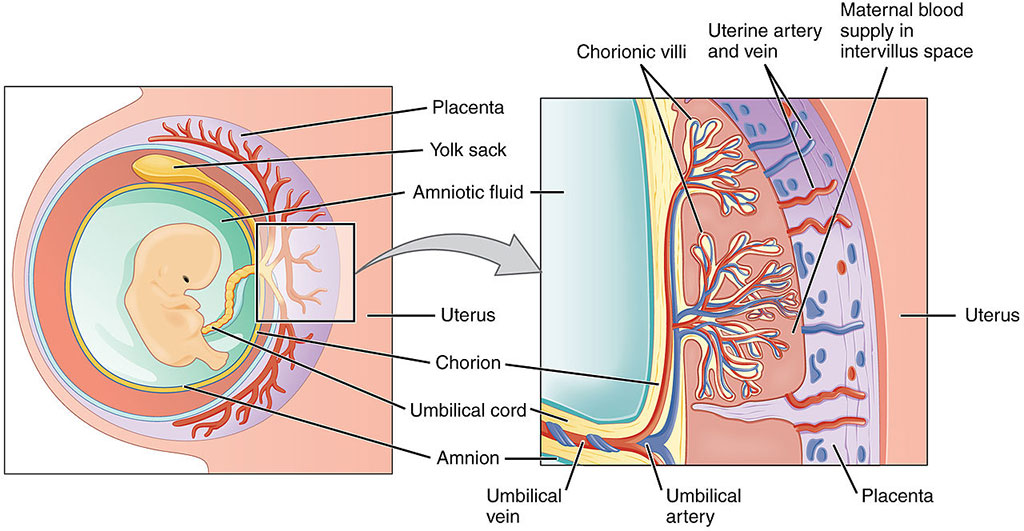Analysis of Placental Cell Free DNA and RNA Predicts Gestational Complications
By LabMedica International staff writers
Posted on 20 Oct 2020
A recent paper revealed that circulating cell-free nucleic acids (DNA and RNA) shed from the placenta into the mother's blood during the first trimester of pregnancy could be used to predict potentially serious complications such as ischemic placental disease and gestational diabetes. Posted on 20 Oct 2020
Although analysis of maternal plasma cell-free content has been employed for screening of genetic abnormalities within a pregnancy, limited attention has been paid to its use for the detection of adverse pregnancy outcomes based on placental function.

Image: Schematic view of the placenta (Photo courtesy of Wikimedia Commons)
In this light, investigators at the University of California, Los Angeles (USA) analyzed the cell-free DNA and RNA content of 102 maternal and 25 cord plasma samples obtained from a group of pregnant women between February 2017 and January 2019. A total of 160 of the participants gave birth by the end of the study.
Results revealed that during the first trimester, placenta-specific DNA increased prior to the subsequent development of gestational diabetes with no change in patients with pre-eclampsia while decreasing with maternal obesity. Moreover, using cell-free RNA sequencing, adverse pregnancy outcomes revealed 71 differentially expressed genes early in pregnancy. In particular, the investigators noted upregulation of the S100A8, MS4A3, and MMP8 genes that had been already associated with adverse pregnancy outcomes but also the upregulation of BCL2L15 and the downregulation of ALPL that had never been associated with adverse pregnancy outcomes.
These results enabled the investigators to construct a classifier with a positive predictive ability of 0.91 for adverse pregnancy outcomes, 0.86 for pre-eclampsia alone, and 0.64 for gestational diabetes.
"Our research points to a promising approach that could improve outcomes for mothers and their babies using existing technologies," said senior author Dr. Sherin Devaskar, professor of pediatrics at the University of California, Los Angeles. "If confirmed in larger studies, cell-free DNA blood tests may help identify issues in the placenta as an indicator of a healthy mother and fetus. The novelty of this research is being able to break down a mother's DNA and be able to hone in on the health of the placenta - something that researchers have never been able to do before. This research warrants application of automated methodologies in multi-center trials to improve future testing and screening for all women."
The study was published in the October 13, 2020, online edition of the journal Epigenetics.
Related Links:
University of California, Los Angeles














